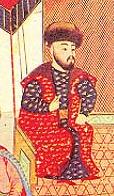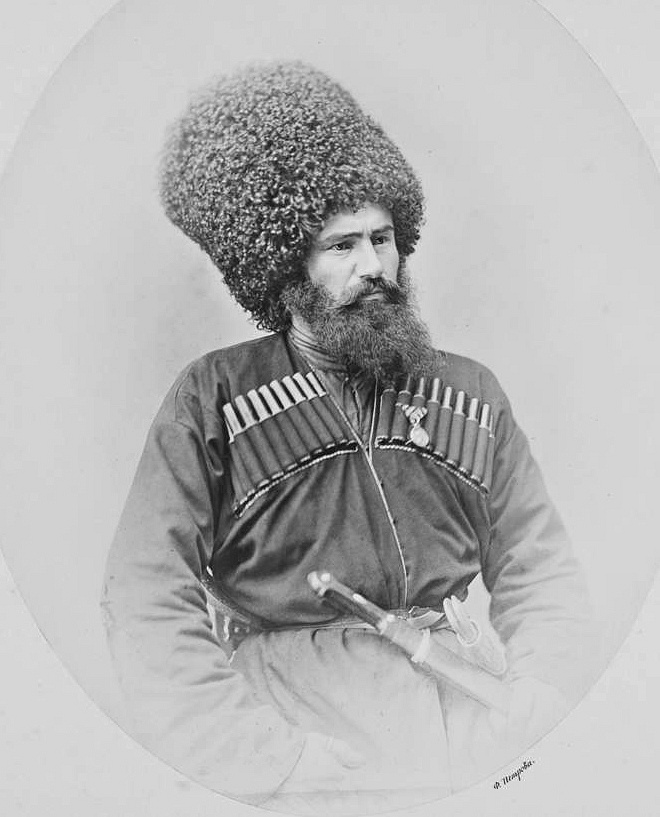|
Mehmed II Giray
Mehmed II Giray, the Fat (1532–1584, reigned 1577–1584) was khan of the Crimean Khanate. During his reign he made at least three campaigns against Persia in the service of the Ottomans. He was overthrown by the Ottoman Empire for refusing another campaign. He was one of the numerous sons of Devlet I Giray. Five of his brothers were later Khans. He was called ''Semiz'' or 'the fat'. Because of his weight he avoided riding horseback and preferred to travel in a wagon drawn by six or eight horses. His use of a wagon contributed to his death. When he came to the throne he had no living uncles and six living brothers: Adil, Alp, Gazi, Fetkh, Mubarak and Selyamet. Saadet II Giray was his son. His many brothers, each of whom was a potential khan, caused trouble during his reign and after. Early life He was the son of khan Devlet I Giray (1551–1577). After the death of his elder brother Akhmed in 1555 he held the rank of Kalga or deputy khan and designated successor until his fat ... [...More Info...] [...Related Items...] OR: [Wikipedia] [Google] [Baidu] |
List Of Crimean Khans
This is a list of khans of the Crimean Khanate, a state which existed in present-day southern Ukraine from 1441 until 1783. Crimean Tatars, although not a part of the Ukrainian ethnos, are deeply interconnected, having ruled a large part of modern Ukraine over the span of 300 years. The position of Khan in Crimea was electoral and was picked by beys from four of the most noble families (also known as Qarachi beys: Argyns, Kipchaks, Shirins, and Baryns) at kurultai where the decision about a candidate was adopted.Giray - Khan dynasty of Crimea Khan's Palace website (unavailable currently). The newly elected Khan was raised on a white sheet and over him were re ... [...More Info...] [...Related Items...] OR: [Wikipedia] [Google] [Baidu] |
Şabran
Shabran ( az, Şabran) is a city in and the capital of the Shabran District of Azerbaijan Azerbaijan (, ; az, Azərbaycan ), officially the Republic of Azerbaijan, , also sometimes officially called the Azerbaijan Republic is a transcontinental country located at the boundary of Eastern Europe and Western Asia. It is a part of t .... History Known as Davachi ( az, Dəvəçi) until 2010, Shabran received city status in 1961. The name of Shabran comes from an historic medieval town of the same name that was a port some 15km further north. Demographics The officially registered population of Shabran in 2010 was 23,248. Azerbaijanis and Tats are the largest ethnic groups. Geography Culture Transport Education Notable residents References External links * Populated places in Shabran District Baku Governorate {{Davachi-geo-stub ... [...More Info...] [...Related Items...] OR: [Wikipedia] [Google] [Baidu] |
16th-century Rulers In Europe
The 16th century begins with the Julian year 1501 ( MDI) and ends with either the Julian or the Gregorian year 1600 ( MDC) (depending on the reckoning used; the Gregorian calendar introduced a lapse of 10 days in October 1582). The 16th century is regarded by historians as the century which saw the rise of Western civilization and the Islamic gunpowder empires. The Renaissance in Italy and Europe saw the emergence of important artists, authors and scientists, and led to the foundation of important subjects which include accounting and political science. Copernicus proposed the heliocentric universe, which was met with strong resistance, and Tycho Brahe refuted the theory of celestial spheres through observational measurement of the 1572 appearance of a Milky Way supernova. These events directly challenged the long-held notion of an immutable universe supported by Ptolemy and Aristotle, and led to major revolutions in astronomy and science. Galileo Galilei became a champion of ... [...More Info...] [...Related Items...] OR: [Wikipedia] [Google] [Baidu] |
Crimean Khans
Crimea, crh, Къырым, Qırım, grc, Κιμμερία / Ταυρική, translit=Kimmería / Taurikḗ ( ) is a peninsula in Ukraine, on the northern coast of the Black Sea, that has been occupied by Russia since 2014. It has a population of 2.4 million. The peninsula is almost entirely surrounded by the Black Sea and the smaller Sea of Azov. The Isthmus of Perekop connects the peninsula to Kherson Oblast in mainland Ukraine. To the east, the Crimean Bridge, constructed in 2018, spans the Strait of Kerch, linking the peninsula with Krasnodar Krai in Russia. The Arabat Spit, located to the northeast, is a narrow strip of land that separates the Sivash lagoons from the Sea of Azov. Across the Black Sea to the west lies Romania and to the south is Turkey. Crimea (called the Tauric Peninsula until the early modern period) has historically been at the boundary between the classical world and the steppe. Greeks colonized its southern fringe and were absorbed by the Ro ... [...More Info...] [...Related Items...] OR: [Wikipedia] [Google] [Baidu] |
Crimea
Crimea, crh, Къырым, Qırım, grc, Κιμμερία / Ταυρική, translit=Kimmería / Taurikḗ ( ) is a peninsula in Ukraine, on the northern coast of the Black Sea, that has been occupied by Russia since 2014. It has a population of 2.4 million. The peninsula is almost entirely surrounded by the Black Sea and the smaller Sea of Azov. The Isthmus of Perekop connects the peninsula to Kherson Oblast in mainland Ukraine. To the east, the Crimean Bridge, constructed in 2018, spans the Strait of Kerch, linking the peninsula with Krasnodar Krai in Russia. The Arabat Spit, located to the northeast, is a narrow strip of land that separates the Sivash lagoons from the Sea of Azov. Across the Black Sea to the west lies Romania and to the south is Turkey. Crimea (called the Tauric Peninsula until the early modern period) has historically been at the boundary between the classical world and the steppe. Greeks colonized its southern fringe and were absorbed by the Ro ... [...More Info...] [...Related Items...] OR: [Wikipedia] [Google] [Baidu] |
Kumyks
, image = Abdul-Wahab son of Mustafa — a prominent Kumyk architect of the 19th century. , population = near 600,000 , region1 = , pop1 = 503,060 , ref1 = , region2 = , pop2 = 10,000 , ref2 = , region3 = , pop3 = 718 , ref3 = , langs = Kumyk language , region4 = , pop4 = 1200 , ref4 = , region5 = , pop5 = 481 , ref5 = , region6 = , pop6 = 360 , ref6 = , region7 = , pop7 = 33 , ref7 = [...More Info...] [...Related Items...] OR: [Wikipedia] [Google] [Baidu] |
İslâm II Giray
Islyam II Giray (or İslâm) (reigned 1584–1588) was a khan of the Crimean Khanate. His long stay in Turkey, theological training, and possibly age, may have unfitted him to rule. Most of the fighting was done by his brother Alp Giray. He was one of the many sons of Devlet I Giray. His reign was briefly interrupted by the usurpation of his nephew Saadet, and much of his reign was spent in conflict with Saadet and his brothers, the sons of his murdered brother and predecessor, Mehmed II Giray. Unlike many Crimean khans he died of natural causes. Early life The year of his birth is not given. After his father Devlet I Giray came to the throne in 1551, Islyam was sent to the Sultan's court as a ''rekhin'' or kind of honorary hostage. Girays living in Istanbul could be put on the Crimean throne if the ruling khan was disobedient. He spent more than 30 years of his life in Turkey and at some point left the Ottoman court for the Mevlevi Order of Sufis at Konya, where he engaged in pra ... [...More Info...] [...Related Items...] OR: [Wikipedia] [Google] [Baidu] |



